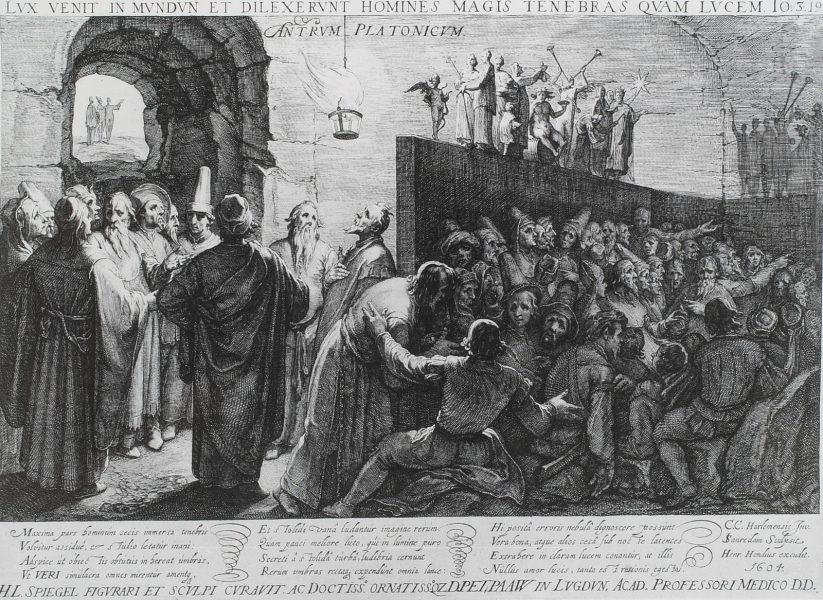
Socrates: Imagine that there are people living in a cave deep underground. The cavern has a mouth that opens to the light above, and a passage exists from this all the way down to the people. They have lived here from infancy, with their legs and necks bound in chains. They cannot move. All they them from turning their heads around. Imagine that far above and behind them blazes a great fire. Between this fire and the captives, a low partition is erected along a path, something like puppeteers use to conceal themselves during their shows.
Plato, Allegory of the Cave
Glaukon: I can picture it. (Plato, Allegory of the Cave)
Plato’s Allegory of the Cave ostensibly describes process of enlightenment, from a condition of puerile belief to a state of pure reason. What is less often remarked, the allegory is written in the style of a nested story. On the surface, the Allegory relating Plato’s metaphor for the human condition. The perfunctory interpretation holding the Prisoner that sees through the world of appearances transcends the lot that marvel at the shadows. The qualifier of allegory though suggesting an alchemical interpretation beyond the plain and ordinary meaning. In that vein, what is implied, though never stated, the paradigm of the cave extends, more nearly so, to the eponymous puppets in dialogue. That one imagines with much ease the scene transpiring in a deep hole of a cellar. Socrates filling the role of the puppeteer in the Cave. And Glaukon, that of the hapless prisoner who marvels at the picture on the Wall. The Allegory secreting by the nexus the Reader into the Cave. For whom the Word casting the image into the mind. The ascent taking on a programatic function, impressing the modal representation of reality, whiles at the same time depreciating the neo-natal existence of the lot that marvel at the shadows. The Prisoner emerging from the womb into la città ch’ha nome Dite, the City of Light, “where he begin sees all things thro’ narrow chinks of his cavern.” The theater, far from retreating in significance, subtending the Real. The framework of which urging the Reader, if subliminally, to find, at the literal level, the image belies else, but also, at the transliteral level, the image masquerades as else. The Allegory illuming heretofore unknown human condition: what is inaccessible to the symbolic order, cannot be spoken of. The saving grace of which, the knowledge of the form of the good.
BIBLIOGRAPHY: 1. Saenredam, Jan. Antrum Platonicum. 1604. Engraving on Paper. National Gallery, London. 2. Eyer, Shawn. Ahiman: A Review of Masonic Culture & Tradition. San Francisco: Plumbstone, 2009. Print. 3. Blake, William. William Blake: The Complete Poems. Edited by Alicia Ostriker. London: Penguin, 2004. Print.